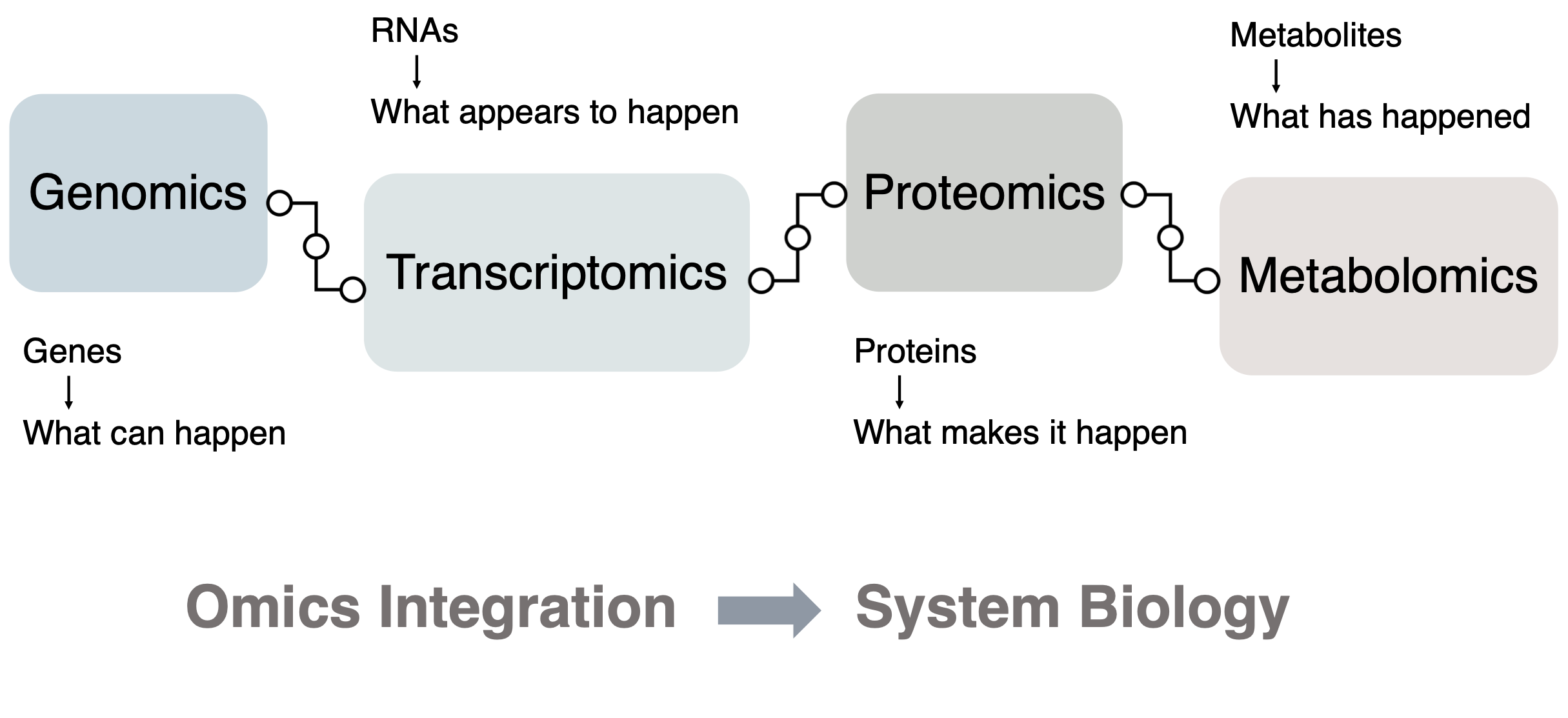About Bioinformatics
Bioinformatics is an interdisciplinary field that combines biology and data science to analyze and interpret biological data. It requires the application of computer science and statistics to extract meaningful information from large and complex biological datasets.

Bioinformatics is heavily involved in research studies that use omics measurements such as next-generation sequencing (NGS) or mass spectrometry to discover a pattern in a biological process. Omics refers to large-scale studies of biological molecules in a system, such as genomics, transcriptomics, proteomics, and metabolomics. Bioinformatics provides the essential computational and statistical methods to process, analyze, and extract meaningful information from the large datasets generated by omics technologies.

(Narad & Kirthanashri, 2018)
References:
1. Narad, P., Kirthanashri, S.V. (2018). Introduction to Omics. In: Arivaradarajan, P., Misra, G. (eds) Omics Approaches, Technologies And Applications. Springer, Singapore. https://doi.org/10.1007/978-981-13-2925-8_1
2. Mangul, S., Martin, L.S., Hill, B.L. et al. Systematic benchmarking of omics computational tools. Nat Commun 10, 1393 (2019). https://doi.org/10.1038/s41467-019-09406-4
3. Dai, X., & Shen, L. (2022). Advances and trends in omics technology development. Frontiers in Medicine, 9, 911861. https://doi.org/10.3389/fmed.2022.911861
4. Karczewski, K. J., & Snyder, M. P. (2018). Integrative omics for health and disease. Nature Reviews Genetics, 19(5), 299-310. https://doi.org/10.1038/nrg.2018.4


